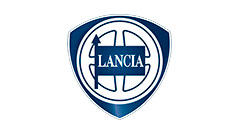
A long came a spider. Rarity, beauty and competition breeding Lancia Aurelia Spider. The Lancia Aurelia is one of the most coveted of Italian cars – and the B24 Spider is chief among them. Andrew English finds out why. Photography Charlie Magee.
I’m reminded of a lion’s nose when the Aurelia emerges. The curve of the bonnet as it jets out from under the panoramic windscreen and into the prow of the grille looks, in profile, like the muzzle of a lioness. In fact the whole car looks like something gorgeous but dangerous, seen fleetingly through dense bush.

Those proportions are just heartbreaking, with a fingernail-snapping tension that would be too easy to spoil. An inch more height or squareness in those rear wings and this lovely Lancia’s beauty would evaporate like Ayesha in the flames of the Spirit of Life in Ryder Haggard’s She. Constituent parts are almost a caricature, the screen for example reminiscent of countless craft produced up the road at the factory on Lago d’Iseo by Riva Boats. Or that ‘Batman’ shadow thrown into the car’s wake by the bootlid and rear wings as you motor into the afternoon sun.
Since the Renaissance, Italians have been brilliant at the funambulistic balance between ugliness and proportional beauty created out of things that might not themselves be absolutely beautiful.

While the car was called after a Roman road – the Via Aurelia, from Rome to Pisa – that name is derived from the feminine of the Latin family Aurelius, in turn derived from aureus, or gold. Aurelia is a memorable name for a wonderful series of cars. The first model appeared in 1950 and, with its automotive-world- first V6 engine, transaxle-mounted rear transmission and inboard rear brakes, it cut quite a swathe through the Triumphs and Austin-Healeys of the period, and even the Jaguars and ACs.
The Aurelia was offered in several different body types, roughly categorised as the B10 saloons and derivatives, the shortened B20 coupé, and the B50 platform for coachbuilders. Total production for the eight-year run of the entire Aurelia series was just 18,201, of which, one estimate suggests, only 1050 survive.
The B24 Spider was launched at the 1954 Brussels show and it was based on the shortened chassis from the B20 with a body designed by Pininfarina, which also built a four-seat cabriolet version. Some 240 B24 Spiders were built, 59 right-hand-drive examples and 181 with left-hand drive. Folklore has it that 50 examples were lost in the hold of the steam ship Andrea Doria when she collided with the MS Stockholm in July 1956 and sank off the Nantucket coast en route to New York.
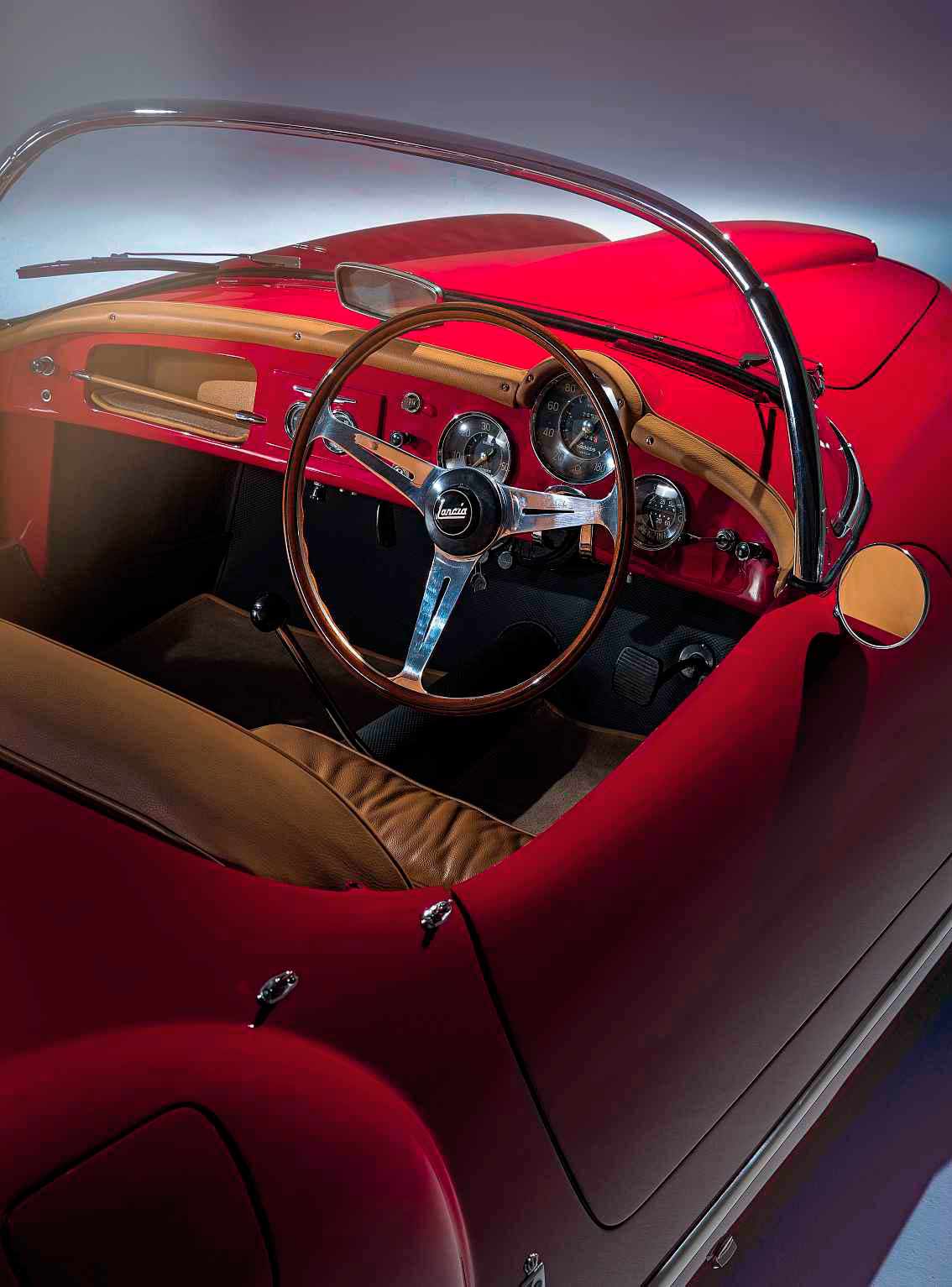
‘That’s bollocks,’ says Anthony Hussey, long-time B24 Spider owner. There’s not much Hussey hasn’t done with his, including smashing it up on the infamous Le Jog rally, which necessitated a complete rebuild. In fact, Hussey’s car has little to prove as, apart from its rally exploits in his hands in over half-a-century of ownership, it is also one of only two B24s ever to have started the original Mille Miglia race.
We’ll come back to Hussey, but in the meantime he cites several impeccable sources to disprove the Andrea Doria canard. If you mix the 1950s, glamorous-looking dropheads and America, out comes the egregious Austrian-born New York importer/collector Max Hoffman. It was he who backed his hunch that the post-war class of wealthy youngsters and Hollywood glitterati would snapup two-seater speedsters with big orders for early cars.
The BMW 507, Alfa Romeo’s Giulietta, Mercedes-Benz’s SL and the Porsche Speedster were other examples of his gutsy confidence. Later research has discovered that the 50 Aurelia B24s he’d fronted for were loaded on a ship a year before the Andrea Doria went down. LANcIA IS At a low ebb these days, with only one car of its own (the Ypsilon supermini), which is joined by sundry badge-engineered Chryslers. Lancias haven’t been sold in the UK since 1995 (the Delta Integrale), and it’s largely known for the 1980s rust scandal during which Lancia was forced to buy back corrosion-stricken Beta models from owners.
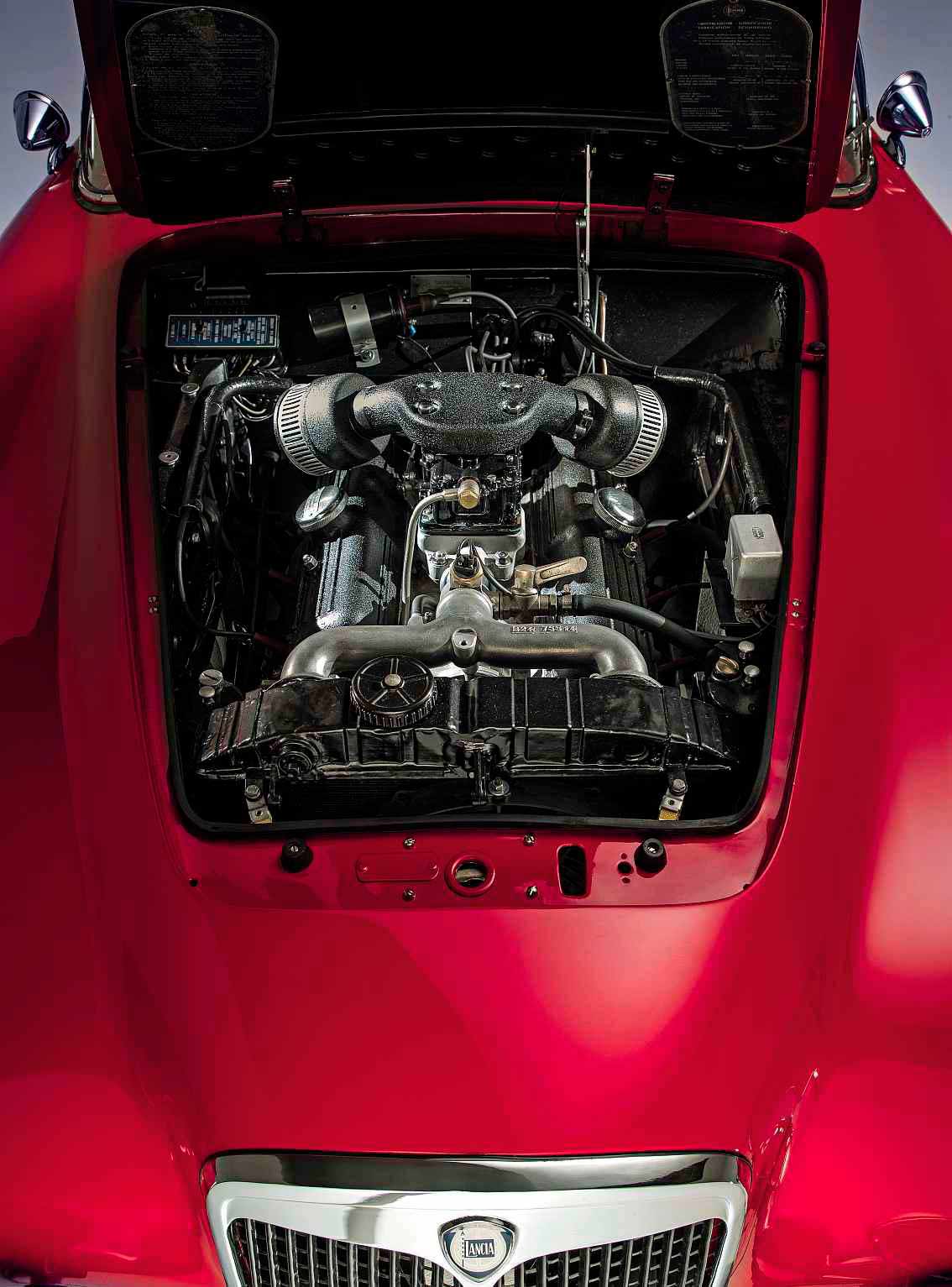
Even when it was independent, however, Lancia was never particularly profitable and was still handbuilding cars when rivals including Fiat were into mass-production. Yet since its formation in 1906, as the brainchild of former Fiat racing drivers Vincenzo Lancia and claudio Fogolin, Lancia was one of the world’s most innovative and progressive carmakers. It pioneered the use of electrical lighting, monocoque chassis and independent suspension, and also developed pioneering V4 and V8 engines prior to World War two with narrow angles between the cylinder banks, which shared common cylinder heads.
But high production costs, a devil-may-care appetite for motor racing and almost completely absent economies of scale forced Vincenzo’s son Gianni Lancia and his mother to sell their shareholding to the Pesenti family in 1955, which didn’t fare much better and sold the loss-making turin marque to Fiat for a peppercorn in October 1969.
So its last fully independent, family-owned days in the early 1950s were probably the best and worst of times for Lancia. The promising D50 Formula 1 racer won pole and fastest lap on its 1954 debut with Alberto Ascari at the wheel, although in 1955, following his death and the firm’s takeover, those same cars – along with the undoubted talents of engineer Vittorio Jano – were handed over to Scuderia Ferrari.
And then there was the Aurelia, a visual and dynamic hit, even if per-unit profits weren’t high.
After some experimentation, permission had been given for engineer Francesco De Virgilio to begin work on a 60º V6 in the late 1940s, which, thanks to the wider bodyshell, could be accommodated under the bonnet along with the solid steering column once mandated by the Italian authorities. Its lightweight block was surmounted by cylinder heads with hemispherical combustion chambers and valves inclined along the engine’s length, actuated by aluminium-alloy pushrods.
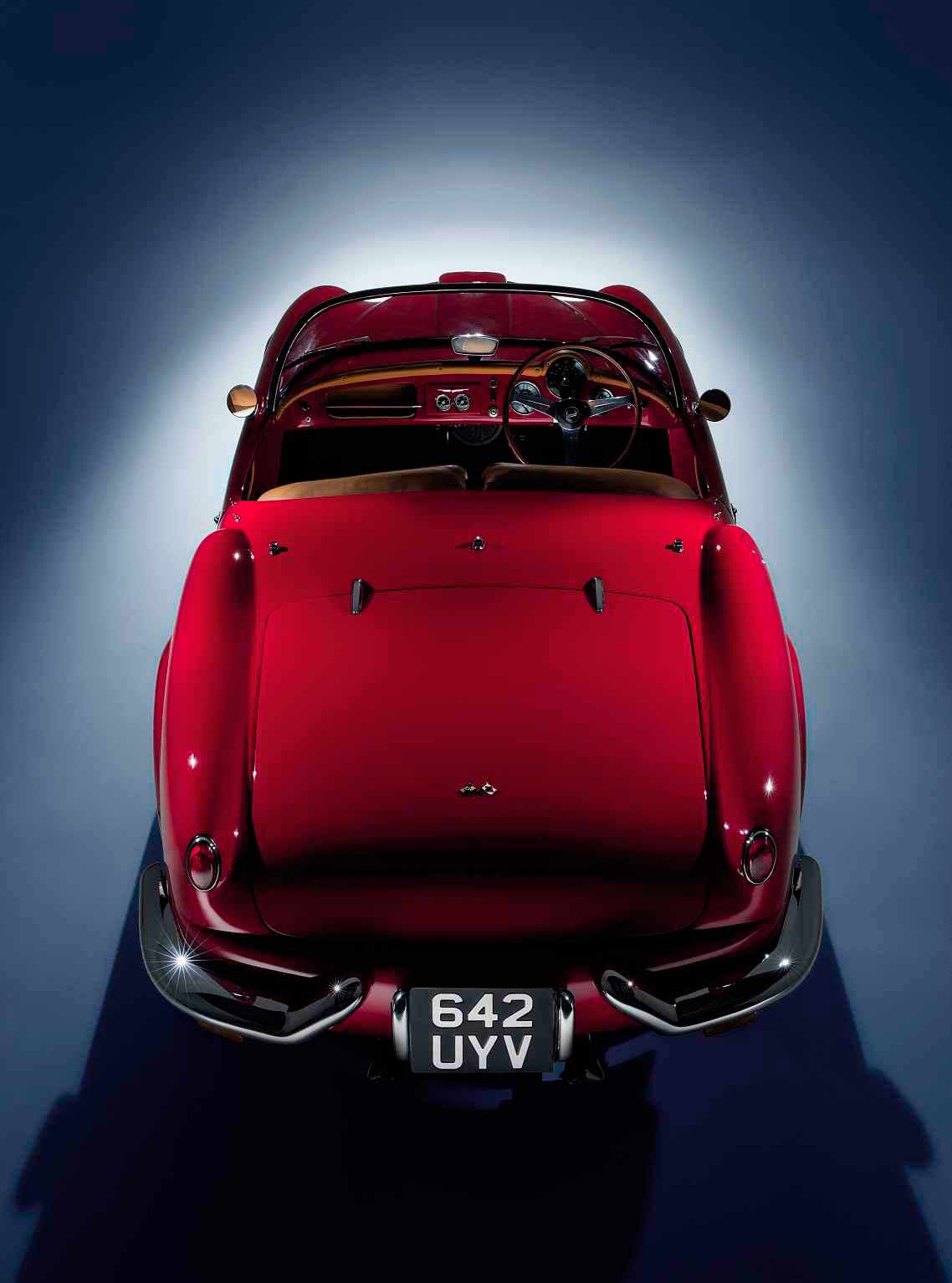
With the clutch and the four-speed gearbox in the rear axle, weight balance was good, although the split propshaft could add a frisson of vibration to high-speed running. The first B10 Aurelias sported engines that displaced just 1754cc and had semi-trailing link rear and sliding-pillar front suspension – those strange blanking plugs in the front wings are there to allow the withdrawal of the front damper units from their lowest setting. As a former editor once said: ‘Morgan pioneered the sliding-pillar front suspension and the world has singularly failed to beat a path to its door ever since.’
While the system offers a featherlight unsprung weight and good control of individual wheel travel geometry, when the car rolls the front wheels’ camber angles change in direct proportion to the amount of body roll. For that reason, it is best to run standard narrow-gauge tyres on cars so fitted, or the hard antiroll bar and springs required to keep the tyres flat on the ground give a crashing ride quality and odd steering behaviour.
The B10 was eventually replaced by the B12 with a 2266cc engine, a B15 long-wheelbase version and the B21 and the B22, which had 2.0-litre engines. It was the 1951 B20 Gt coupé, however, that was the driver’s car, which started as a 2.0-litre, gained a 2451cc unit for the third series, and a full de Dion axle and Panhard rod for the fourth, a suspension that might be considered the perfect complement to the front sliding-pillar front suspension.
‘The interior has a charm and simplicity that modern automobile design has left far behind’
Don’t walk away thinking those early cars were somehow inferior, though. The first Aurelias were quick straight out of the box, and it was one of the finest-handling cars of its generation. In 1951, Giovanni Bracco drove a works B20 Gt to a sensational overall second place and a class win in the deluged Mille Miglia. A Piedmontese by birth, nicknamed ‘Giuàn’, he was an enormous if madcap natural talent behind the wheel and an archetypal period Italian gent, with his brilliantined hair and tombstone teeth – by all accounts he liked a drink and chain-smoked Pall Mall cigarettes.
He first entered the Mille Miglia in 1938 with a Fiat 1500 Spider, was placed fourth in 1950 driving a 2.0-litre Ferrari 166 MM, and in 1952 he won in a 3.0-litre Ferrari 250 Sport.
In 1951 he was co-driven by Umberto Maglioli, who must have had an interesting day at the office as he passed lit fags to Bracco while he danced his little Lancia through the rain for 13 straight hours. It was only after Florence on the way back up north that Luigi Villoresi managed to extend his lead in his evil-handling 4.1-litre Ferrari 340 America and, when the little Aurelia skidded over the finish line, Giuàn grabbed a bottle of wine and glugged the lot without drawing breath.
If the B20 GT was the giant-killer, the B24 Spider – often called the America, and which was based on the fourth series GT – was the film star. They’d taken 185mm out of the wheelbase and lowered the ride height under Pininfarina’s coachwork. The car had all the fourth-generation Aurelia chassis modifications and the 2.5-litre V6, which was producing about 118bhp on a single Weber carburettor mounted in the vee. It weighed 1054kg, and performance was quite modest, with a top speed in the region of 115mph and 0-60mph achievable in about 11.5 seconds.
‘It’s not what they do, it’s the way they do it,’ says Hussey. ‘With that sliding-pillar front suspension and lovely V6, the balance is perfect. On twisty roads, a faster Jaguar XK140 can’t hold onto you.’
As well as that natural balance from the transaxle layout, there’s also an immaculate control weighting and progression. This is a surprisingly he-man car, with big pedals, a large-diameter steering wheel for the worm-and- wheel system, and a massive gearlever sticking out of the right-hand side of the transmission tunnel.
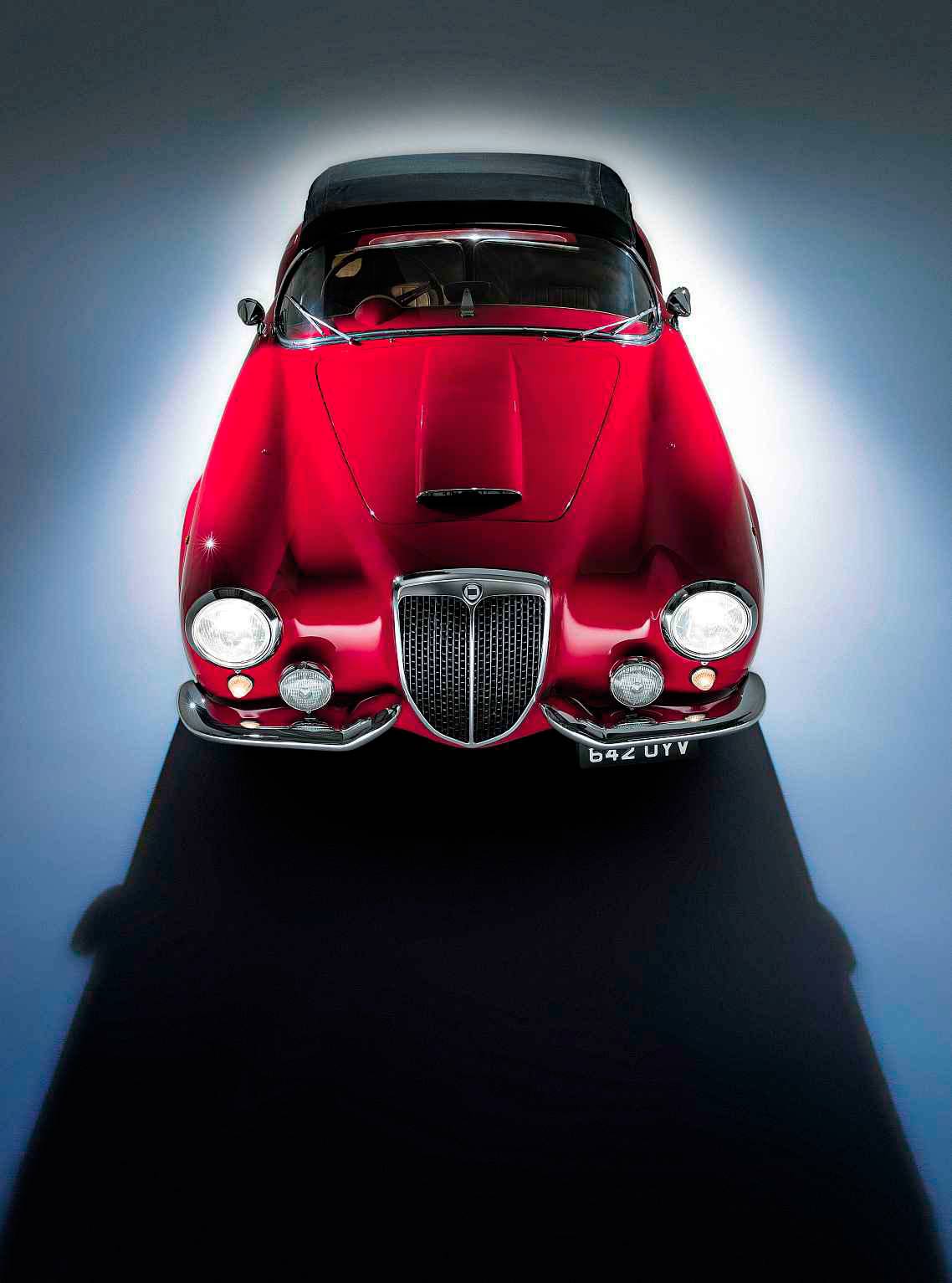
Despite Italy converting formally from driving on the left to the right in 1923 (Rome converted in 1925 and Milan in 1926), right-hand- drive cars continued to be popular even after World War Two, and the Aurelia’s gearchange is mechanically better-suited to right-hand drive configuration.
The rest of the interior has a charm and simplicity that modern automobile design has left far behind. The engine coughs into life and adopts a whirring tenor note from those extraordinary exhaust snaps. It’s no lightweight, rev-happy beast, but it feels vivacious and the six cylinders give it a portentous presence. And that gearchange is a delight, especially considering its tortuous route back to the transaxle.
‘If the B20 GT was the giant-killer, the B24 Spider was the film star’
Hussey says his car delivered an average of 25mpg when he was driving thousands of miles across Europe, but these days and with a new uprated Jim Stokes engine it’s more like 22mpg. ‘It’s expensive to run,’ he admits. ‘It needs a full service every 2500 miles, but I just love driving it so much.’
And his advice to someone looking for a B24? ‘If they’ve not owned one before, take it to an expert before buying; Jim Stokes at Waterlooville or Omicron Engineering in Norwich, for example. Be patient with the brakes and bed them in properly. That transmission shake can be cured with attention to detail and a tiny bit of slop in the centre bearing, and make sure you balance the tyres on the car after you’ve scrubbed them in. Oh, and the heater is an absolute fobster; it looks impressive but is useless.’
So are B24s worth the considerable amounts being asked for them nowadays? They were always expensive; at the end of 1955 one would cost £3173, which was almost twice the price of an XK140 and about £72,700 in today’s values. The example in these pictures is believed to be the third production B24 built, and at the time of writing was being offered for sale by Hexagon Classics.
‘One sold in the US last year for well over a million pounds,’ says Hussey, carefully. ‘That was a special car, restored by an absolute stickler for quality and originality, and it sold very well, but now everyone thinks they’ll fetch similar amounts, and they won’t necessarily.’
He believes a decent example should cost around three-quarters of a million pounds, which seems about right. They’re rare, quite quick, easy and rewarding to drive and rather beautiful to look at. That’s probably all you’d want of a classic, isn’t it? In that respect, this lovely Lancia fits the bill perfectly.
Thanks To hexagon Classics, www.hexagonclassics.com.
TECHNICAL DATA FILE SPECIFICATIONS 1955 Lancia Aurelia B24 America
Engine 2451cc V6, OHV, Weber 40 DCZ5 carburettor
Power 118bhp @ 5000rpm / DIN
Torque 127lb ft @ 3500rpm / DIN
Transmission Four-speed manual transaxle, rear-wheel drive
Steering Worm and sector
Suspension Front: sliding pillars, coil springs, telescopic dampers. Rear: de Dion axle, Panhard rod, semi-elliptic leaf springs, telescopic dampers
Brakes Drums, inboard at rear
Weight 1054kg
Top speed 115mph
0-60mph 11.5sec

